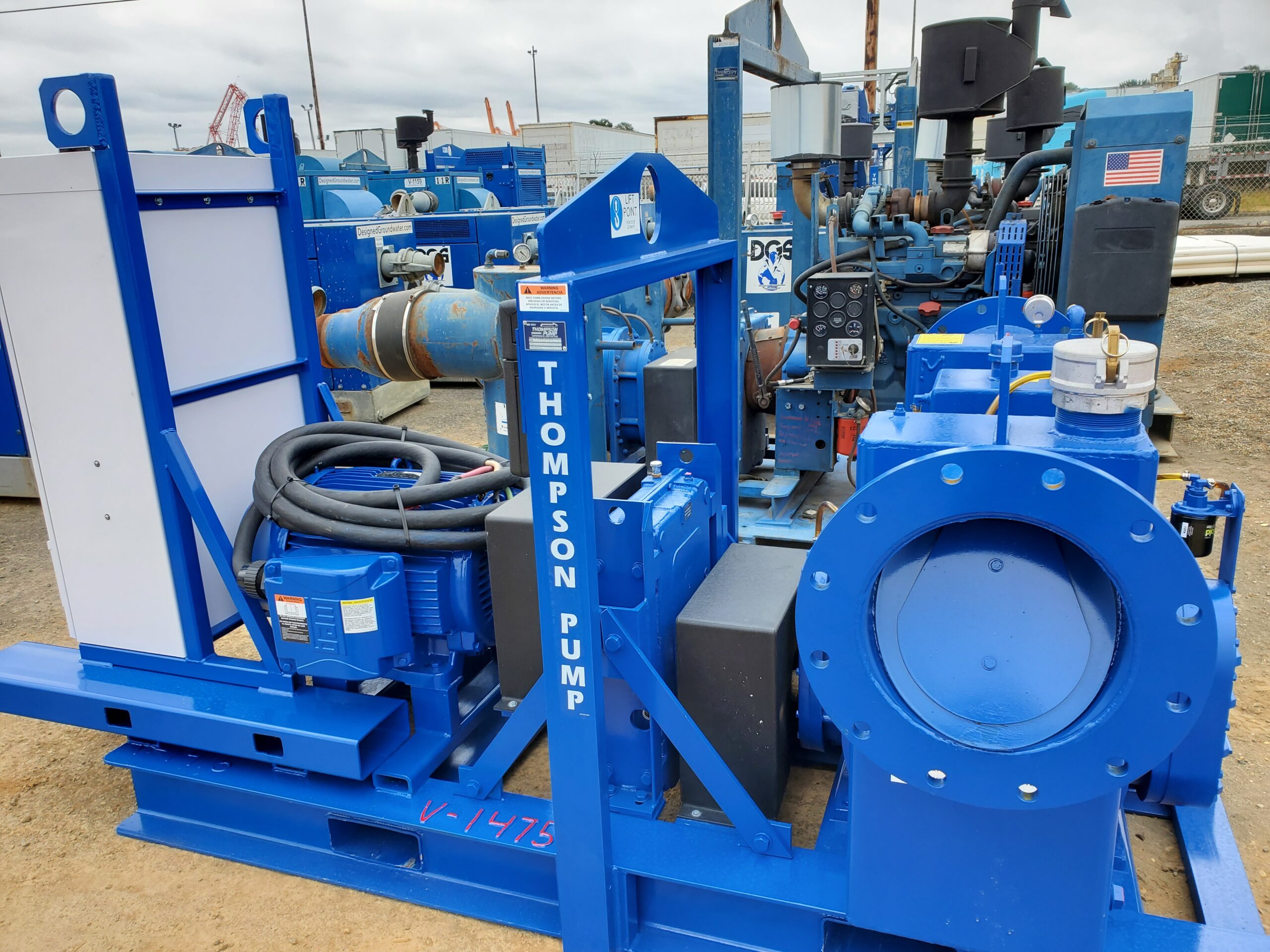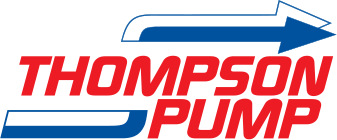Emergency Dewatering Needed to Repair Failed Culverts Underneath Main Runway at Joint Base Lewis-McChord Airfield

In one of the largest dewatering projects west of the Mississippi River in 2020, immediate work was needed to remove and replace failed culverts running underneath the main runway at McChord Airfield, culverts that were starting to impact the runway itself, and the safety of the crews who used the runway.
By: Pat Broderick, National Sales Manager of Thompson Pump & Manufacturing Company and Gary Fors, Designed Groundwater Services
CHALLENGE
In early 2020, the U.S. Army Corps of Engineers, Seattle District was tasked with repairing the Joint Base Lewis-McChord Airfield runway to its full, 10,100-foot operational length. Subsurface conditions of culverts that bridge the McChord Airfield over Clover Creek were found to have formed significant depressions over the alignment of the culverts on both the east and west sides of the main runway. Upon further inspection, crews found that both the north and south culverts were deformed or crushed and had been breached. The runway was placed under a limited-use threshold to avoid aircraft trafficking over the pavement above the culverts. Due to the significance of the failures and the increasing impacts on the runway, crews deemed this an emergency repair.
The two original 12-foot diameter, 1,800-foot-long steel culverts were installed in the early 1950s. Their design life was estimated at 50 years and lasted 20 years longer than expected. With the culverts now collapsing, the USACE, Seattle District, made plans to remove the old culverts and install a new concrete arch bridge structure under the entire width of the airfield. In order to make this happen, crews needed to be able to place the footers and other supports about 10 feet under the water table, which meant the entire area needed to be dewatered.
Also, to note, even if the culverts had not failed, they still would have had to be replaced due to a new Washington State law that requires all culverts to allow the salmon to swim freely. Therefore, all project designs for the replacement system had to account for fish passability.
SOLUTION
In April 2020, the USACE, Seattle District began its search for a dewatering expert and offered the contract to Designed Groundwater Services (DGS), a full-service Dewatering Sub-Contractor, offering the largest vacuum wellpoint fleet on the west coast. Founded by Gary Fors and his father David in 2009, DGS is best known for being the go-to dewatering contractor in the northwest for businesses like Amazon, Costco, Boeing and the Washington State Department of Transportation.
DGS designed a system to remove the groundwater, as well as the sediment and air found in the soil, that consisted of Thompson Pump & Manufacturing Company’s 12-inch Rotary Wellpoint Pumps and their components. The pumps were specifically designed and engineered for wellpoint and sock dewatering with maximum discharge flows of up to 2,500 gallons per minute. The pumps are capable of air displacement volume of up to 400 cubic feet per minute from the ground dewatering system and high-vacuum capability of up to 29-inch Hg. The goal for DGS was to move 1,000 gallons of water per minute.
Not only was DGS tasked with removing the groundwater, but crews had to take extra care to ensure chemicals from the runway usage, such as PFAS – a type of flame retardant, were collected and kept out of the discharged water. A carbon treatment filtration system was brought in to remove impurities and chemicals from the groundwater being pulled from the site during the dewatering process before the water was pumped back into the downstream channel. A creek diversion system consisting of multiple large centrifugal pumps was also installed to divert any additional water from Clover Creek around the project.
RESULTS
The dewatering system was installed, and work began in July 2020. The system ran as many as 13 pumps at one time, allowing up to 5,000 gallons per minute to be pumped out, far exceeding the original expectation. The dewatering system was so efficient, it lowered the water table for the 1,800-foot-long, 80-foot-wide area and held it open for six months, allowing the footers and other reinforcements to be installed all at once. Originally the job was intended to be done in segments. However, once dewatering began the system was so effective it enabled crews to speed up their timetables and complete the work in one phase, finishing 29 days ahead of schedule. The system worked so efficiently, it dried out Clover Creek, eliminating the need for the diversion system until the wet season began in November. At that point, work below grade was completed and the dewatering system was demobilized, and the Clover Creek diversion system took over.
DGS was also able to make the project environmentally friendly. “To go out on a job like this and be able to bring an entire fleet of electric Thompson Pump 12-inch Rotary Wellpoint Pumps, and complete the job ahead of schedule, while using electric and not diesel fuels is what will be expected on most projects in the future, and shows just how Thompson Pump is staying ahead of the trends and leading the industry in its pump designs,” said Gary Fors, General Manager and Owner of DGS.
“Efficiency, ease of use and the impact on our environment are of the utmost importance in every pump we make,” said Broderick. “Not only is it important for us to think of the future of industry technology, but we must also consider the impacts to our lands and infrastructures and make sure we are contributing positively.”
With the $80 million project completed, the new airfield was made significantly larger than the old culverts and the bridge system was built to handle water flows generated by a 100-plus year storm, compared to the old system designed to handle a 50-year storm flow. The new design also allows for a more natural stream bed which improves fish passability, complying with the new Washington State law.
Pat Broderick is the National Sales Manager of Thompson Pump & Manufacturing Company, a family-owned company celebrating more than 50 years in business. Joining the team in 2002, Broderick is responsible for developing and maintaining the distributor/dealer network for all the United States. He is also one of Thompson Pump’s top instructors for their annual Pumpology® School. Considered an expert in the construction industry, Broderick has mastered control wiring, maintenance, engineering, and of course water and wastewater applications within the industry. He continues to be an integral leader at Thompson Pump as the company focuses on full-service manufacturing of high-quality pumps, pumping equipment, and engineering expertise for bypass pumping, dewatering, mining, and flood control.
For more information, visit thompsonpump.com.
Gary Fors is the Owner and General Manager of Designed Groundwater Services. Fors oversees all aspects of this full-service dewatering sub-contractor based in the U.S. Northwest. For more information, visit designedgroundwater.com.
